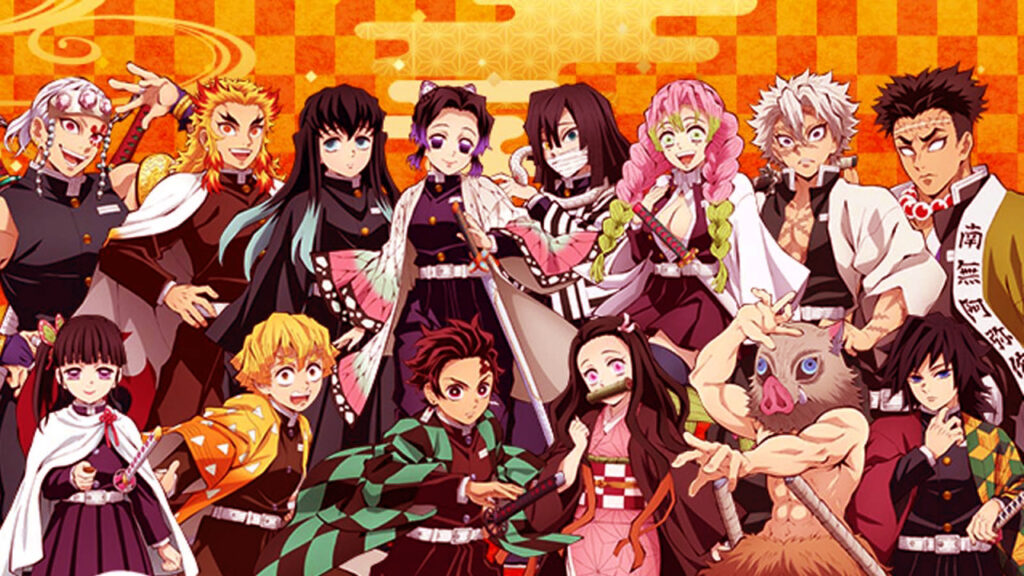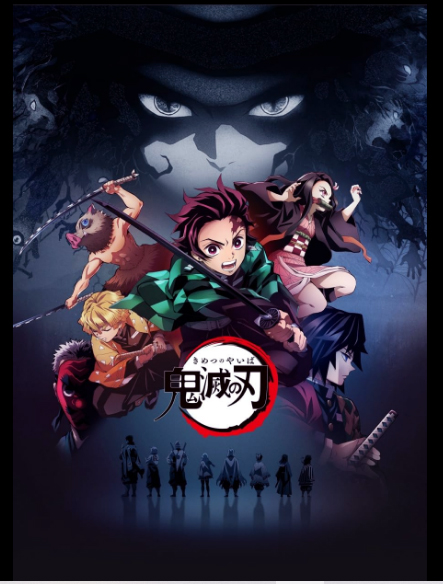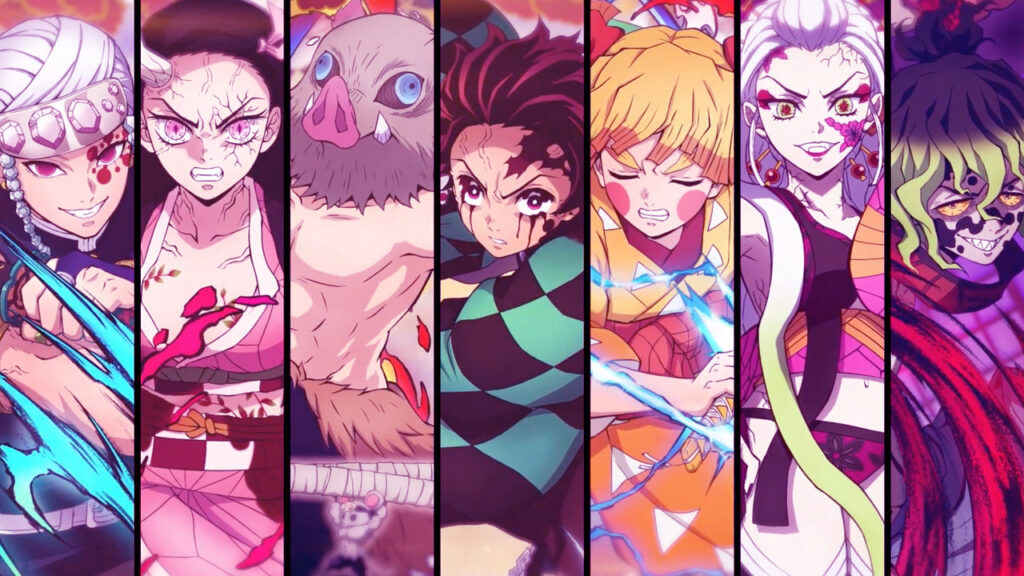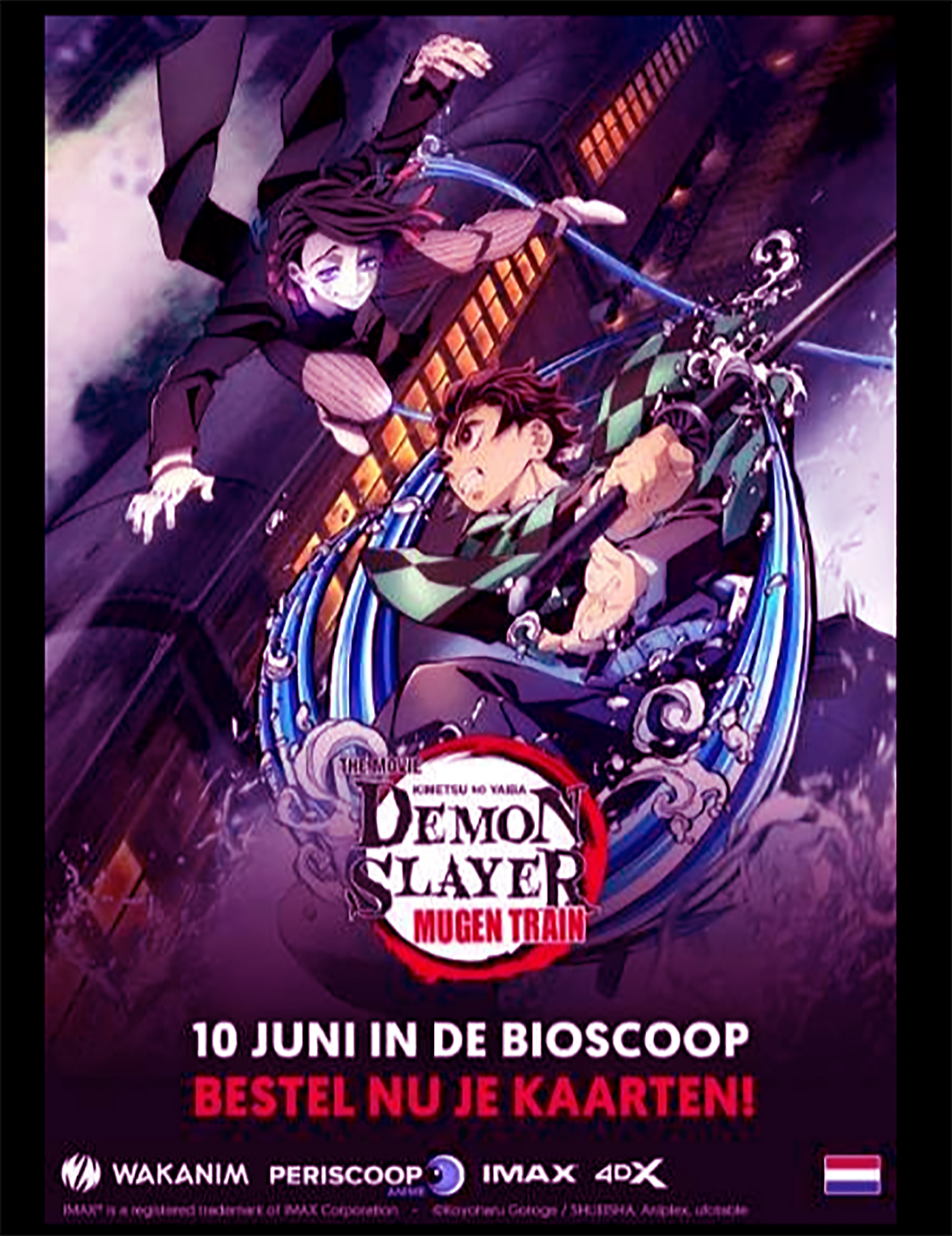Demon Slayer, known in Japanese as “Kimetsu no Yaiba,” is one of the most popular anime series in the world.
There’s no wonder this series has gained such a massive following, with its gripping storyline, stunning animation, and emotionally resonant demon slayer characters.
But beyond the breathtaking visuals and intense battles lies a deeper layer of cultural richness—particularly in the names of the characters.
Understanding these names offers a glimpse into Japanese language and culture, adding another dimension to our appreciation of the series.
What is the Story of Demon Slayer?

Set in Taisho-era Japan, Demon Slayer follows the journey of Tanjiro Kamado, a young boy whose family is murdered by demons. The only survivor, his sister Nezuko, is transformed into a demon. As a result desire to avenge his family and restore his sister’s humanity, Tanjiro becomes a demon slayer.
The series explores resilience, familial bonds, and the eternal struggle between good and evil, all set against a backdrop of richly detailed historical Japan.
Tanjiro’s journey begins when he returns home one day to find his family brutally murdered by demons, with only his sister Nezuko surviving the attack.
However, Nezuko has been transformed into a demon, but one that retains some human emotions and is protective toward her brother.
In order to find a cure for Nezuko and avenge his family, Tanjiro sets out to join the Demon Slayer Corps, an organization dedicated to hunting down and destroying demons.
The story unfolds as Tanjiro undergoes training to become a skilled swordsman. He meets a variety of characters along the way, including Zenitsu Agatsuma, a cowardly yet talented fellow demon slayer, and Inosuke Hashibira, a fierce warrior raised by boars.
Together, they face numerous challenges, battling powerful demons and uncovering the dark history behind their existence.
Central to the plot is the enigmatic leader of the demons, Muzan Kibutsuji, who is responsible for the creation of all demons. Muzan’s insidious influence and the threat he poses to humanity drive the Demon Slayer Corps to push their limits and confront their deepest fears. As Tanjiro and his friends grow stronger, they also learn about the tragic pasts of their enemies, highlighting the series’ recurring themes of empathy and redemption.
Throughout their journey, Tanjiro and his companions form deep bonds and confront their own vulnerabilities.
The series masterfully balances intense action sequences with poignant moments of character development, making it a compelling and emotionally resonant narrative.
Each battle not only tests their physical abilities but also challenges their resolve and moral compass, emphasizing the importance of perseverance and compassion in the face of overwhelming darkness.
What is the Japanese Title of Demon Slayer?

The original Japanese title of Demon Slayer is “Kimetsu no Yaiba” (鬼滅の刃). “Kimetsu” (鬼滅) translates to “demon slaying,” and “Yaiba” (刃) means “blade” or “sword.”
Together, the title signifies “Blade of Demon Destruction,” reflecting the core premise of the series where swordsmen wield special blades to combat demons.
This title describes the essence of the story, highlighting the character’s mission and the weapon central to their quest.
The title “Kimetsu no Yaiba” carries significant weight in Japanese culture. The use of kanji (Chinese characters used in Japanese writing) adds layers of meaning that can be lost in translation.
“Kimetsu” (鬼滅) is composed of “ki” (鬼), meaning “demon,” and “metsu” (滅), meaning “destruction” or “annihilation.”
This part of the title emphasizes the relentless battle against demons. “Yaiba” (刃), meaning “blade” or “sword,” symbolizes the weapon that demon slayers use, highlighting the importance of their swords in the fight against evil.
If you like Japanese Anime names then you might love corpse demon characters Japanese names and meanings behind them.
What are the Meanings Behind the Demon Slayer Characters’ Names?

Tanjiro Kamado
The name “Tanjiro” (炭治郎) is a combination of characters meaning “charcoal” (炭) and “healing” or “cure” (治). The “ro” (郎) is a common suffix for boys’ names, meaning “son” or “young man.” His surname, “Kamado” (竈門), refers to a traditional Japanese stove, symbolizing the warmth and resilience of his family. Tanjiro’s name reflects his role as a healer and protector, deeply connected to his roots as a charcoal seller.
Nezuko Kamado
“Nezuko” (禰豆子) combines the characters for “shrine” or “spirit” (禰) and “bean” (豆), with “ko” (子) meaning “child.” This name may seem unusual, but it signifies a blend of spirituality and sweetness, much like Nezuko’s character who retains her humanity and compassion even as a demon. The “Kamado” last name ties her back to her family heritage, emphasizing her bond with Tanjiro.
Zenitsu Agatsuma
“Zenitsu” (善逸) means “goodness” (善) and “timber” or “a moment” (逸). This reflects Zenitsu’s inner goodness and his fleeting moments of bravery. “Agatsuma” (我妻) means “my wife,” which is humorous given Zenitsu’s romantic and often frantic pursuits of love. His name captures his paradoxical nature—cowardly yet capable of great courage.
Inosuke Hashibira
“Inosuke” (伊之助) combines “boar” (猪) and “help” or “assistance” (助), fitting for his wild and untamed personality. “Hashibira” (嘴平) literally means “beak” and “flat,” possibly referencing his boar mask and straightforward, blunt demeanor. Inosuke’s name embodies his fierce and unrefined character.
Giyu Tomioka
“Giyu” (義勇) translates to “righteous” (義) and “courage” (勇), perfectly representing his stoic and principled nature. “Tomioka” (冨岡) means “wealthy hill” or “rich hill,” suggesting a noble or esteemed background. Giyu’s name underscores his role as a pillar of justice within the Demon Slayer Corps.
Shinobu Kocho
“Shinobu” (しのぶ) can mean “to endure” (忍) or “a type of flower” (しのぶ), both fitting for her dual nature of gentle strength and deadly prowess. “Kocho” (胡蝶) means “butterfly,” highlighting her association with the insect and her delicate yet lethal fighting style. Her name reflects her duality—graceful and deadly.
Kyojuro Rengoku
“Kyojuro” (杏寿郎) combines “apricot” (杏), “longevity” (寿), and the common male suffix “ro” (郎). “Rengoku” (煉獄) means “purgatory” or “refined prison,” signifying his fiery spirit and the hellish trials he endures. His name conveys his passionate and indomitable spirit.
Interesting Lines and Phrases for Learning Japanese
Demon Slayer is not only a feast for the eyes but also a treasure trove for language learners. Here are some key phrases from the series:
- “Onii-chan” (お兄ちゃん) – A term of endearment for an older brother, often used by Nezuko to address Tanjiro.
- “Kisama” (貴様) – A derogatory term for “you,” commonly used by demons when addressing humans.
- “Nakama” (仲間) – Means “comrade” or “friend,” reflecting the strong bonds between the characters.
- “Hashira” (柱) – Refers to the pillars, the elite warriors in the Demon Slayer Corps.
- “Kekkijutsu” (血鬼術) – Demon Blood Art, the special abilities used by demons.
These phrases not only enhance your understanding of the show but also provide a practical way to learn Japanese.
Watching the series with the original Japanese audio and subtitles can help you pick up on these phrases and understand their context within conversations.
Using these phrases in everyday conversation can also improve your language skills. For example, calling your older sibling “Onii-chan” or “Onee-chan” (お姉ちゃん) for older sister can add a touch of cultural flavor to your interactions.
Recognizing derogatory terms like “Kisama” can also help you understand the intensity of certain scenes and character dynamics.
Embracing the language through these phrases allows fans to connect more deeply with the series and appreciate the nuances of the Japanese language.
Frequently Asked Questions (FAQs)
What does "Kimetsu no Yaiba" mean in English?
"Kimetsu no Yaiba" translates to "Blade of Demon Destruction." "Kimetsu" means "demon slaying," and "Yaiba" means "blade" or "sword."
Why is Tanjiro's last name Kamado?
Tanjiro's last name, "Kamado," refers to a traditional Japanese stove. It symbolizes the warmth and resilience of his family, emphasizing their humble and hardworking nature.
What is the significance of Nezuko's name?
Nezuko's name combines characters meaning "shrine" or "spirit" and "bean," with "ko" meaning "child." This blend signifies her spiritual and sweet nature, reflecting her character's purity and humanity despite being a demon.
How can learning Japanese phrases from Demon Slayer be beneficial?
Learning Japanese phrases from Demon Slayer enhances your understanding of the show and provides practical language skills. It helps you grasp cultural nuances and improves your ability to use the language in context.
What makes Demon Slayer's story unique?
Demon Slayer stands out due to its blend of historical setting, deeply emotional character arcs, and the intense battle between good and evil. Its themes of resilience, empathy, and the strength of familial bonds resonate with a wide audience.
The Bottom Line
The names of the characters in Demon Slayer are more than just labels—they are rich with meaning and cultural significance. Each name offers insight into the characters’ personalities, backgrounds, and roles within the story.
By understanding these names, fans can deepen their appreciation for the series and gain a greater understanding of Japanese language and culture.
The next time you watch Demon Slayer, take a moment to consider the profound meanings behind each character’s name—it just might change the way you see the story.
Exploring the names, titles, and phrases within Demon Slayer opens up a new layer of enjoyment and understanding. It reveals how intricately woven the narrative and characters are with Japanese culture and language.
This deeper comprehension not only enhances your viewing experience but also fosters a greater appreciation for the artistry involved in anime creation.
So, as you delve into the world of Demon Slayer, let the names guide you. Allow the phrases to enrich your language skills. Embrace the cultural significance and immerse yourself fully in the tale of Tanjiro and his companions.
In doing so, you’ll find that Demon Slayer is not just an anime; it’s a bridge to understanding a beautiful and complex culture.
